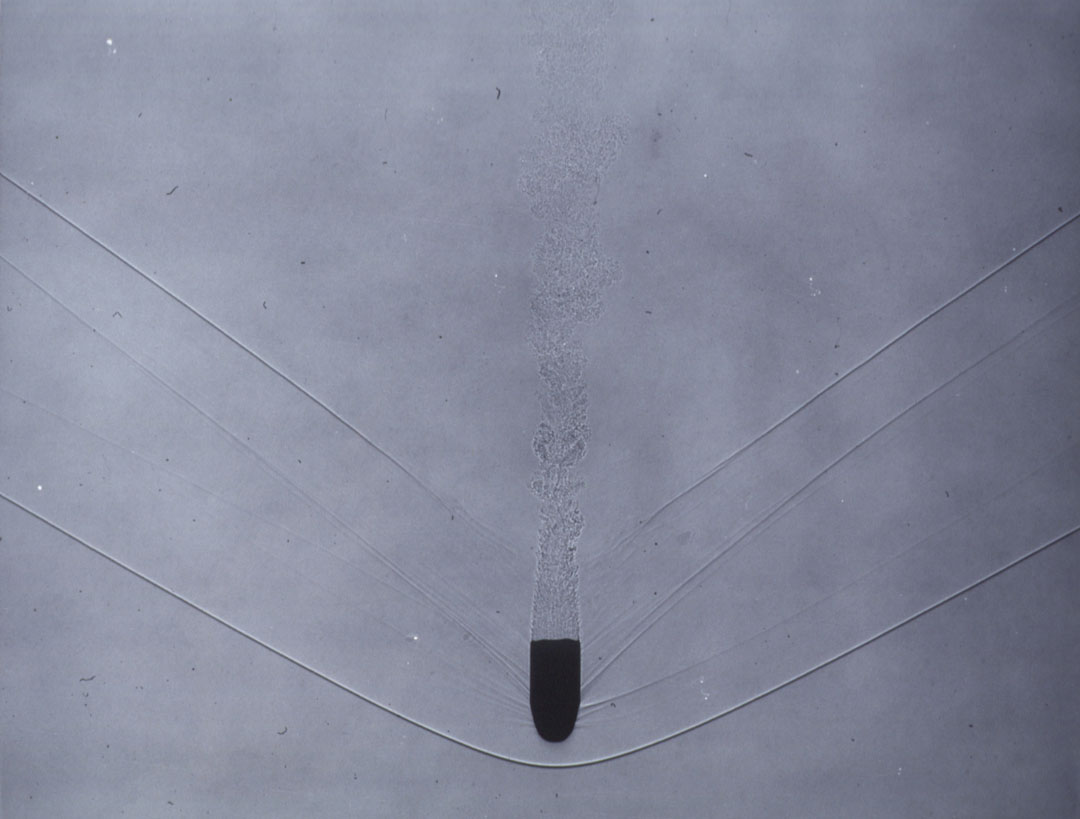Object of the Week: Bullet

As we have seen too many times in recent weeks, a single bullet can destroy a life, a family, and a community. In this photograph by Harold Edgerton, a bullet is frozen in time and space, its trajectory and destruction momentarily bound.
Born in Nebraska in 1903, Edgerton studied electrical engineering at MIT. His academic background, coupled with his interest in motion and high-speed photography, allowed him to produce images that made visible the imperceptible. After earning his PhD in 1931, Edgerton developed and improved upon various stroboscopic models—a repeatable flash device better known today as a ‘strobe’—ultimately applying for 45 patents between the years 1933 and 1936. The high-powered repetition of the strobe allowed Edgerton to effectively freeze objects in motion in order to capture them on film, resulting in iconic photographs that bring together science, technology, and art.
The history of photography is inextricable from the history and development of military technology—to borrow from French theorist Paul Virilio, “For men at war, the function of the weapon is the function of the eye”—making the bullet a fitting subject for Edgerton to capture.[1] In this photograph, printed in 1961, the bullet serves to represent technological achievement and photographic mastery; today, however, it is hard to see a single bullet as anything other than destructive, especially when they are rarely singular, more often multiplied in the hundreds and deployed in seconds.
– Elisabeth Smith, SAM Collection & Provenance Associate